Pool maintenance: top tips on how to look after a backyard swimming pool
Proper pool maintenance is crucial for a clean and healthy swimming experience – this guide has all the advice you need
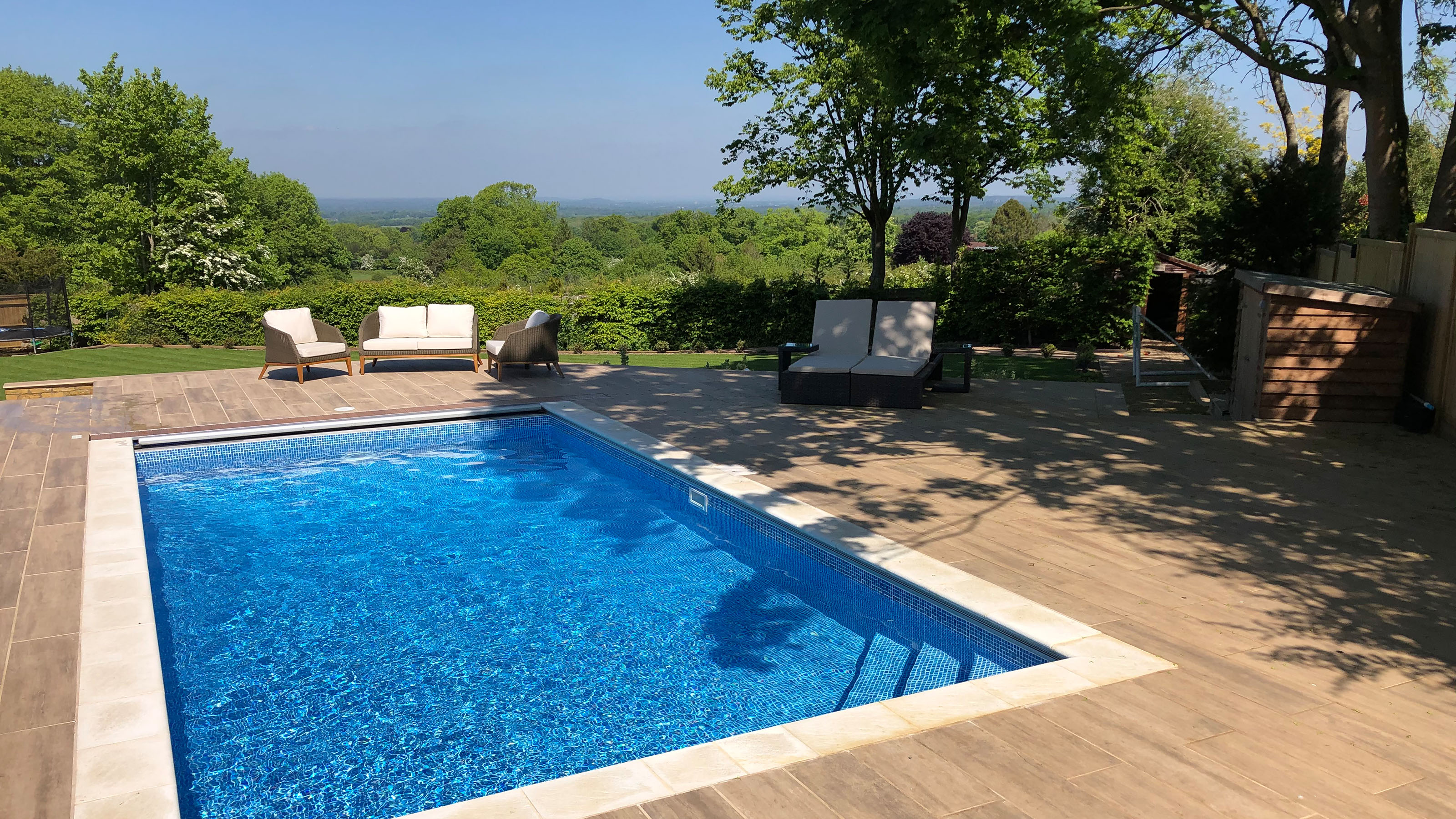

Need some guidance on pool maintenance? You've come to the right place. As you might expect, there's a bit of upkeep involved when it comes to owning a pool – but none of it is too tricky once you know how.
Perhaps our backyard pool ideas have got you inspired for your own. They have tons of benefits after all and can look gorgeous too. But before you commit, it's good to know the basics of pool care. In fact, even if you've owned one for a while, a refresher on how to look after a backyard swimming pool is always handy – especially now that warmer weather is here.
Not looking after a pool properly can result in dirty, algae-ridden water – and naturally, splashing about in that is no one's idea of fun. Not only can it be dangerous to your health, but it can also decrease the lifespan of your pool. However, with the right tips and tricks, pool maintenance can be a breeze and will ensure your water stays crystal clear.
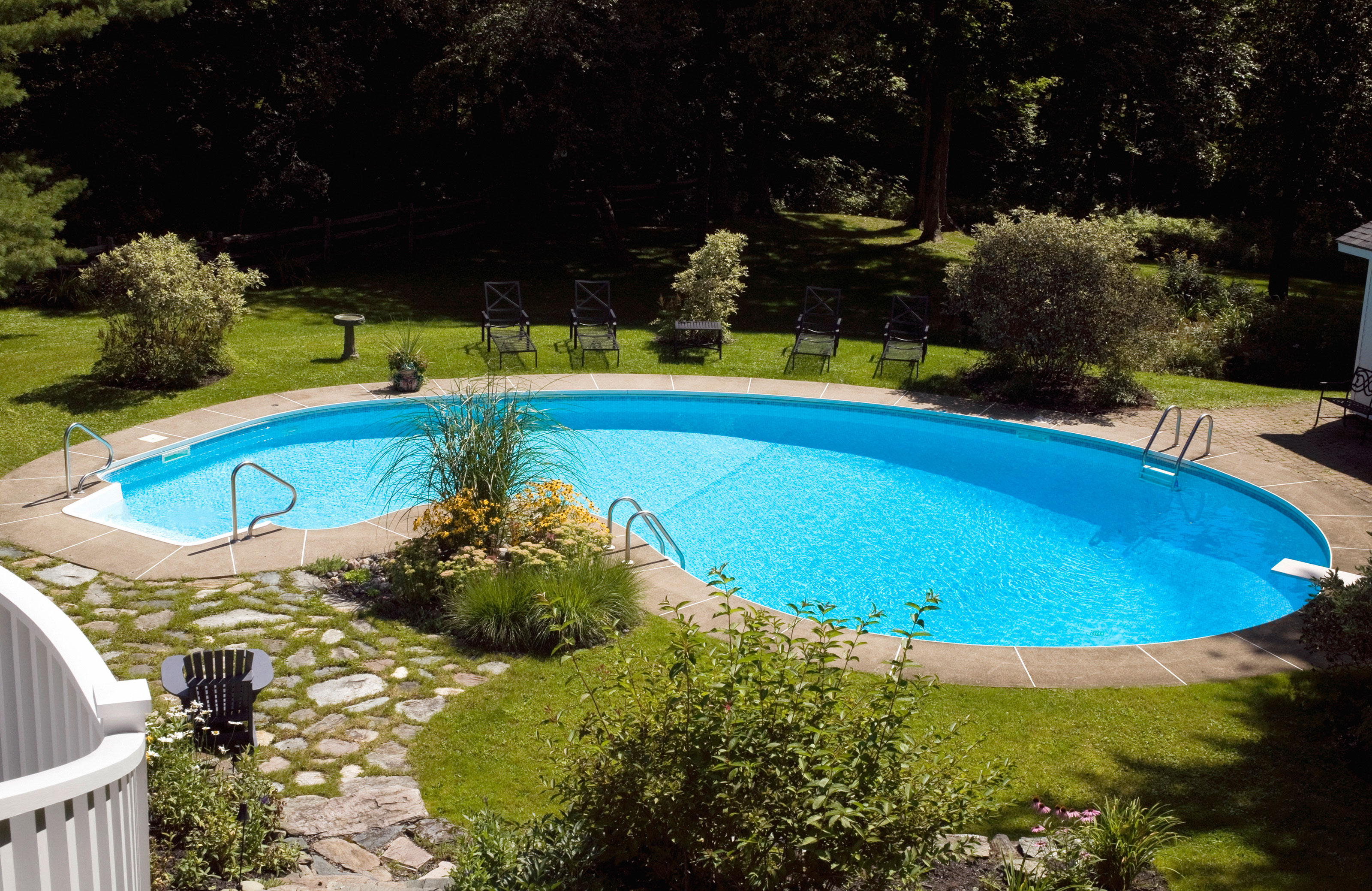
Pool maintenance: 5 top tips for a clean and healthy pool
Keeping your backyard pool clean is an important part of being a pool-owner. These guidelines are a great place to start for most styles. However, if you want a refreshing place to swim that requires less upkeep than a conventional design, you may like to consider natural pools instead.
1. Skim off any debris
No matter what type of pool landscaping ideas you've gone for, leaves, twigs, and other bits and bobs can easily find their way into the water – especially if you have an outdoor design. Luckily, one of the easiest pool maintenance jobs there is is to skim these off using a pool net.
Try to do this daily, or at least every time you use the pool – it doesn't take long and some people find it rather therapeutic. Not only will it make swimming much more enjoyable, but removing debris quickly will prevent it from staining the pool, should it fall down to the bottom.

2. Brush the walls and floor to prevent build-up
Over time, algae, mineral deposits, oils, and other sediments can build up in your pool creating a film on the walls and floor – if you don't keep on top of regular brushing that is.
It's simple to do. Just use a pool brush and thoroughly clean all the surfaces of the pool – wall, floor and steps – working towards the main drain.
It's best to do this at least once a week. However, it's generally a good idea to brush your pool after adding any chemical treatments too. This can help them dissolve quickly, which prevents them from etching the surface of your pool.
- Want more cleaning advice for your backyard? Our guides on how to clean decking and how to clean outdoor furniture will get your plot summer-ready.
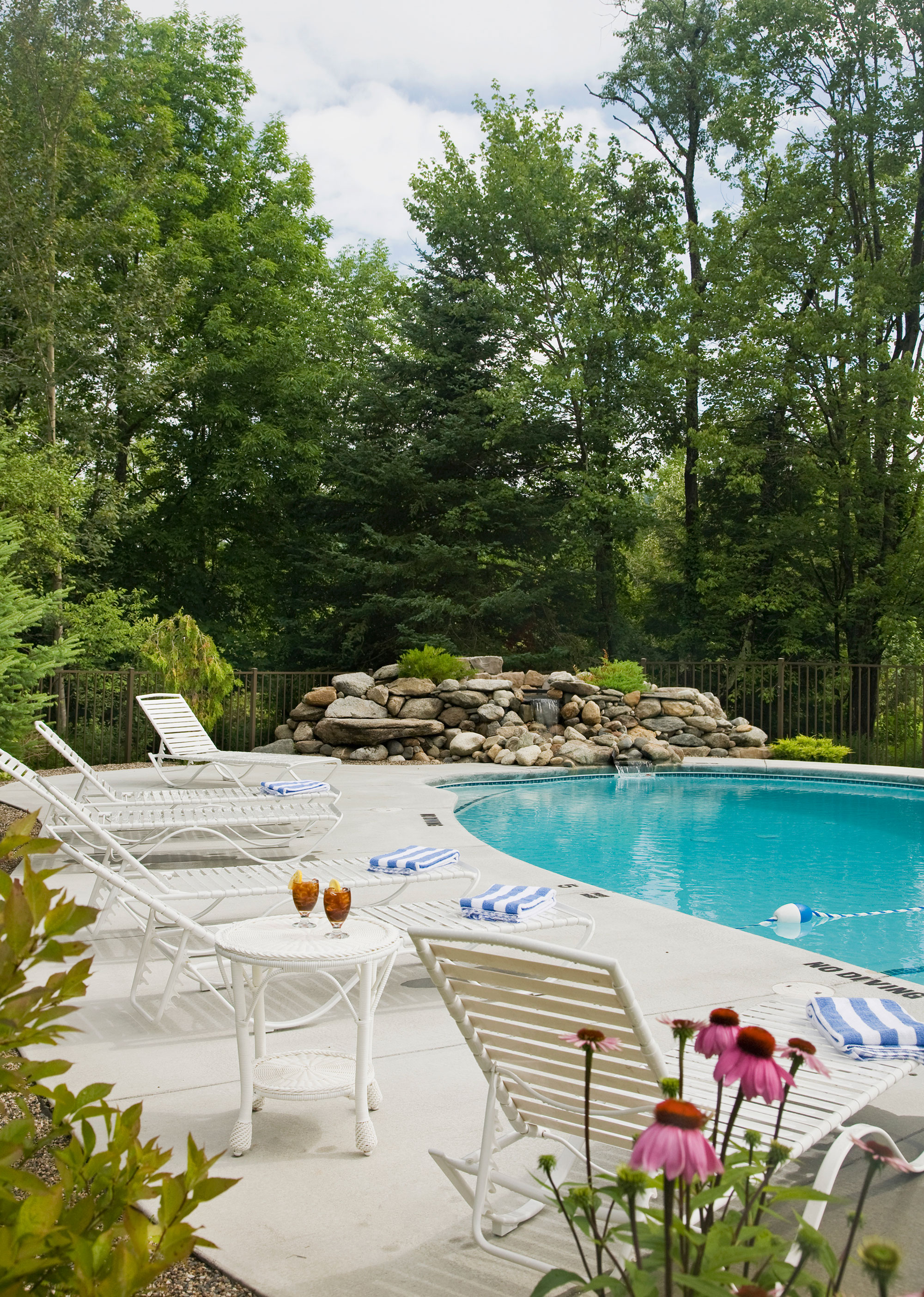
3. Vacuum the bottom of your pool
Another cleaning tip when it comes to learning how to look after a backyard swimming pool is to vacuum it. As you can probably guess, this will clear up any debris from the bottom of your pool. Ideally, you'll need to do this once a week.
There are two types of pool vacuum: automatic and handheld. Automatic vacuums are more expensive, but take care of the work for you – ideal if you're looking for low maintenance garden ideas. You simply plug them in and leave them to do their thing.
Handheld vacuums consist of a vacuum head which attaches to a telescopic pole. A hose is then secured to the vacuum head, with the other end attaching to your pool's skimmer using a vacuum plate.
If your pool has a multiport valve, you'll generally want to set it to 'filter' whilst you vacuum. For very dirty pools (for instance, when you do the first clean after winter), switch the multiport valve setting to 'waste'. Bear in mind that the waste setting will lower the water level of your pool, meaning you will need to top it up with a hose as you work.
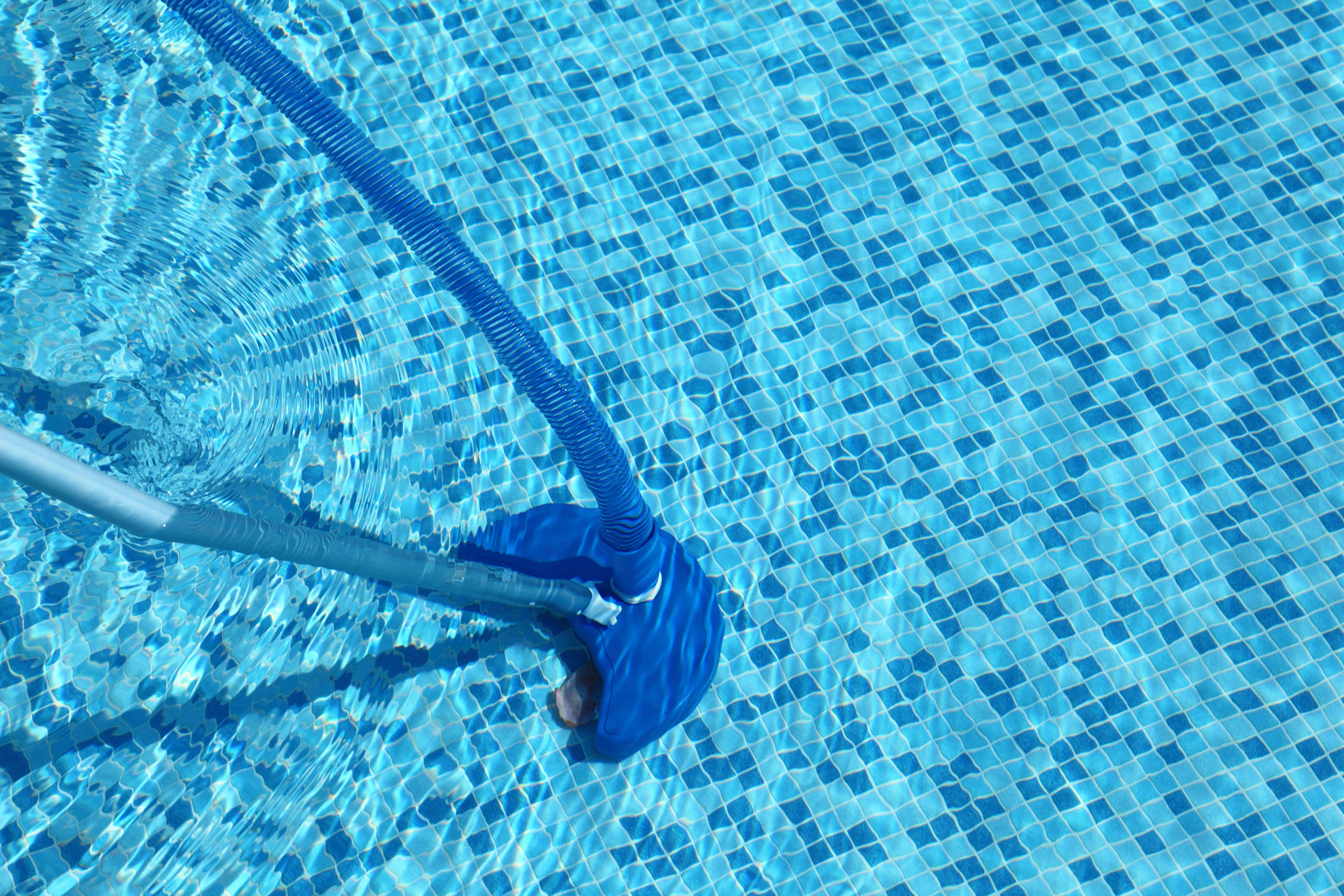
4. Practice proper circulation
Next up on the pool maintenance list is circulating your pool – and this is just as crucial as the previous steps. You need to ensure that the water is moving through the skimmer, pump, filter and jets properly – stagnant water encourages algae and bacteria and is definitely not what you want for a pleasant swimming experience.
First off, you'll need to run your pump for around 8–12 hours a day, as suggests SwimmingPool.com – a little more if you're in a hot climate. If you buy a variable speed pool pump, you can save money and energy, as you can run it at a lower speed throughout the day, they add.
You will also need to clean your skimmer baskets – around once or twice a week. To do so, turn off the pump, and simply remove the basket to empty it, before replacing.

You will need to keep your pool filters in check too. There are a few different types of filter commonly used in pools, and they require slightly different cleaning methods.
First, let's talk about sand, glass, or diatomaceous earth (DE) filters. If your pool is looking cloudier than usual, or the filter's pressure gauge is reading 10 psi higher than normal, then it's probably time for a good clean. Sand or glass filters generally need cleaning more often than diatomaceous earth ones – around once a fortnight. DE ones normally need cleaning a handful of times per season.
To do so, set your pool's multiport valve to 'backwash' for a few minutes, before setting it to 'rinse'. Repeat this process a couple of times, decreasing the backwashing time as you go. You'll need to top up a DE filter with more DE powder once you've done this.
Cartridge filters need slightly different handling. All you need to do is remove the filter (make sure all power to your pool pump is off beforehand), and give it a good clean with a hose. You'll need to do this roughly every two to six weeks – but as with the other filters, keep an eye on the pressure gauge too, as this is a telltale sign. Once a year, give it a soak for 12 hours in a specified pool cartridge filter cleaning solution.
- Our guide on pool design ideas has more helpful info if you fancy one of your own

5. Get the chemical balance right
A final factor for good pool maintenance is the balance of chemicals in the water.
The first thing to check is the pH levels. The optimum level is 7.0–7.6. Anything lower and the water will be too acidic, which can corrode your pool over time. Anything higher and your pool will be too alkaline, which can lead to issues with scaling, cloudy water, and the chlorine losing its effectiveness.
Test your water around once a week (or more if you're using it daily) and adjust accordingly with commercially bought pool balancers to keep your pool in optimum condition. Always read the instructions on the label and wear protective clothing and safety goggles when working with chemicals.
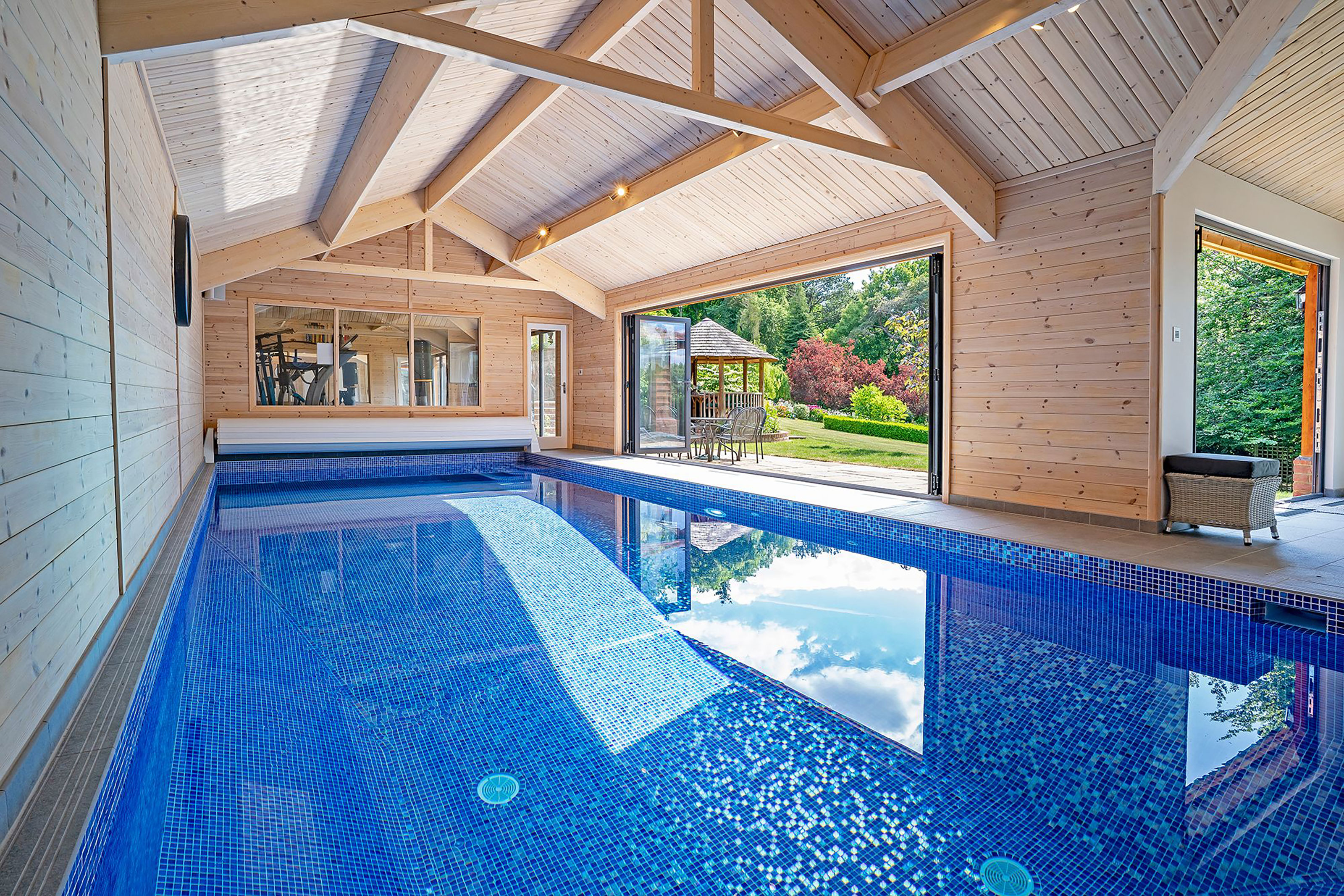
Another factor to check as part of your pool maintenance routine is the sanitizer levels – we're talking chlorine or bromine. Bromine is more expensive, but doesn't smell as strong, and is kinder to skin. Both help to destroy bacteria and keep the water clean, and the levels need to stay stable. There are simple test strips you can buy to check your levels – aim to do this daily.
Every pool will need a different amount of sanitizer to be added regularly – so if you need further advice, it's always best to ask your pool manufacturer.
You will also need to 'shock' your pool – generally once a week. This is a concentrated dose of sanitizer (although you need to use a specific product, not just add a higher dose of your usual chlorine or bromine). Follow the package instructions as with any chemical. You'll usually need to wait at least eight hours to be able to use your pool again safely after a treatment.
- Want to give your pool an extra boost? Pool house ideas and pool fence ideas make practical and stylish additions

Extra pool maintenance things to look out for
Keeping on top of proper pool maintenance will help your pool last longer and stay in tip-top condition. However, sometimes things can go wrong which require the help of an expert. The team at SPATA (the Swimming Pool and Allied Trades Association) suggest to keep an eye out for the following:
- A peculiar noise emanating from the plant room
- A wet patch in the plant room
- If the pool is not up to temperature, even though you think the pool heater is working
- If the pool water is green, even though you think the chemical levels are correct
- If you feel uncomfortable with the humidity or air temperature in the pool hall
- If there are unusual levels of condensation on the glass or walls of the pool hall
- If there is mould growth due to low airflow (and dirty air filters)
If any of the above happens to your pool and you are unsure of what to do, 'you must contact an expert,' the team says. 'Just as you would take your car to a reputable garage for any servicing or repair work, they will be able to diagnose any issues and rectify them.
'The best port of call will be to contact your pool installer. Many pool installers will offer maintenance contracts, so it's worth asking your pool contractor what aftercare services they offer or whether they have a pool maintenance provider they can recommend. This will ensure that you get the maximum enjoyment from owning your pool or spa.'
- Not got the space for a pool? Our hot tub ideas make a fabulous alternative

There are also a few 'statutory' obligations for pool or inground spa owners, SPATA explains. These include the following:
- Gas and oil boilers must be serviced according to the manufacturer's instructions.
- Electrical trips and earth leakage devices must be inspected annually.
- Refrigeration systems (heat pumps) must be checked for leaks each year under the gas regulations.
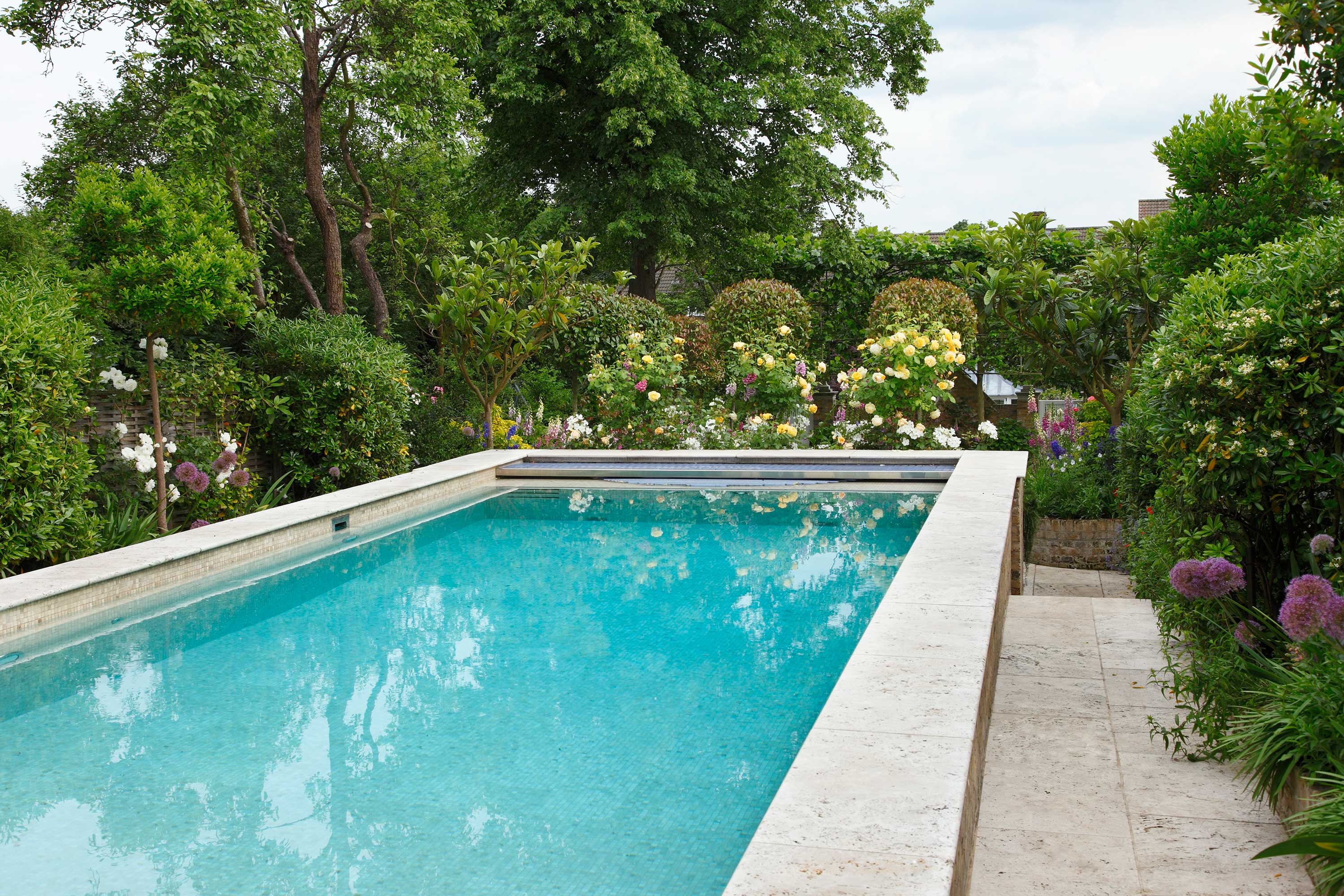
When should you carry out pool maintenance?
'Pool maintenance companies often offer spring opening and autumn closing services,' explains SPATA. 'These are good times to check everything is in working order to enjoy trouble-free pool and spa ownership.'
However, as you now know after reading this guide on pool maintenance, there are plenty of cleaning and other upkeep jobs that need to be done much more frequently. Of course, if you don't fancy doing it yourself, you can hire a pool maintenance professional on a regular basis – for instance, once a week.
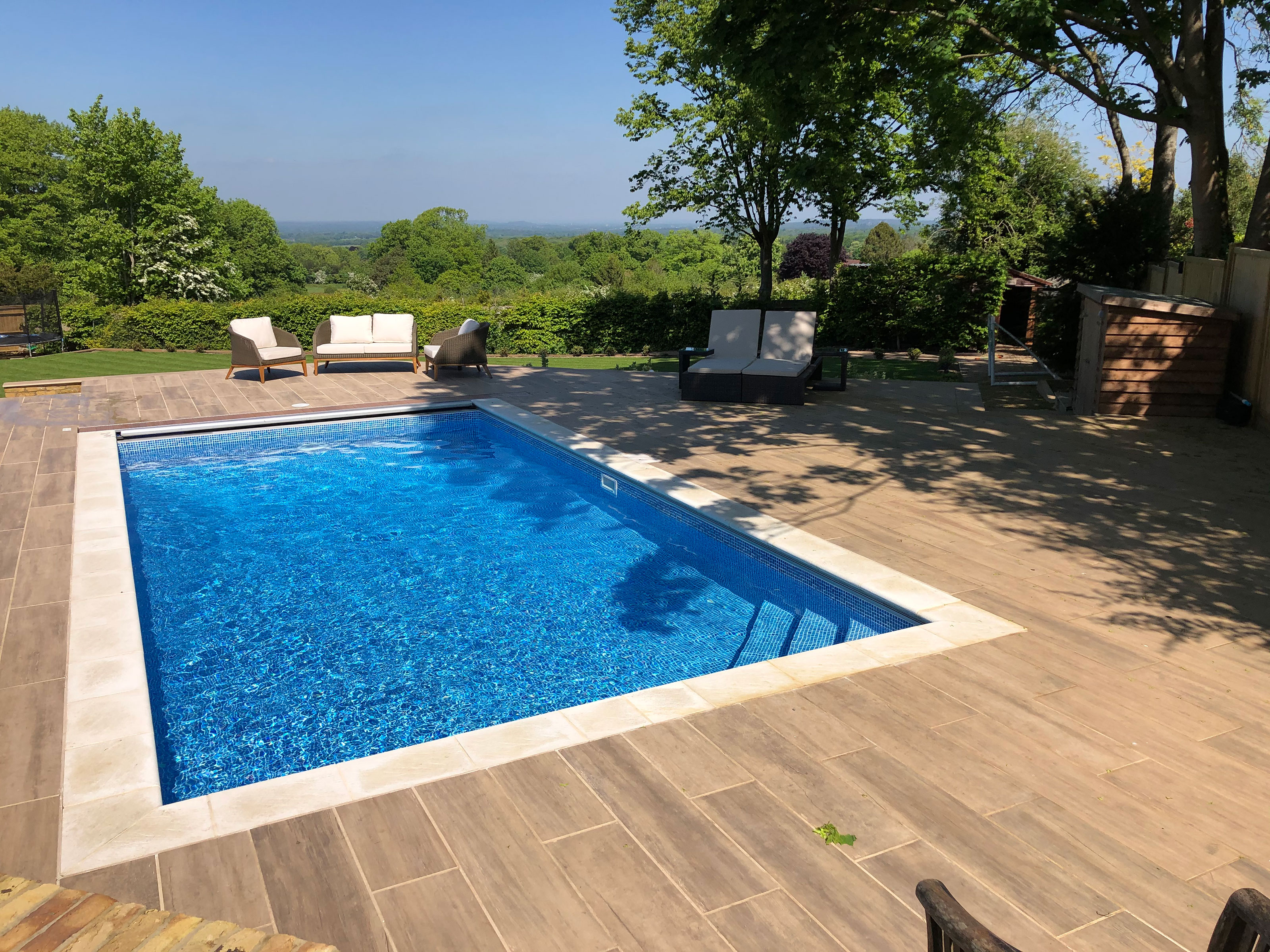
How much does it cost to have someone maintain your pool?
Naturally, taking care of the day-to-day pool maintenance tasks yourself is better for your budget, but some people simply don't have the time. If you would prefer to hire someone instead, expect to pay around $100 to $150 per month for weekly or bi-weekly maintenance from a professional, according to HomeAdvisor.com (this is around £70 to £110). This normally includes tasks like checking the water level, testing water chemistry, applying chemicals, and emptying skimmers.
You may also wish to hire a professional to open and close your pool. HomeAdvisor.com estimates that closing a pool for winter can cost around $150 to $300 (around £110 to £215). This includes jobs such as shocking the water, backwashing the filter, lowering the water levels and installing the cover. It tends to cost about the same to open it back up again when the weather warms.
Remember that there are other costs involved too – things like repairs, electricity to run the pump, and water will all contribute to the overall price of keeping a pool. If you're looking for ways to save in your backyard to balance out the costs, it's worth checking out our cheap garden ideas feature.
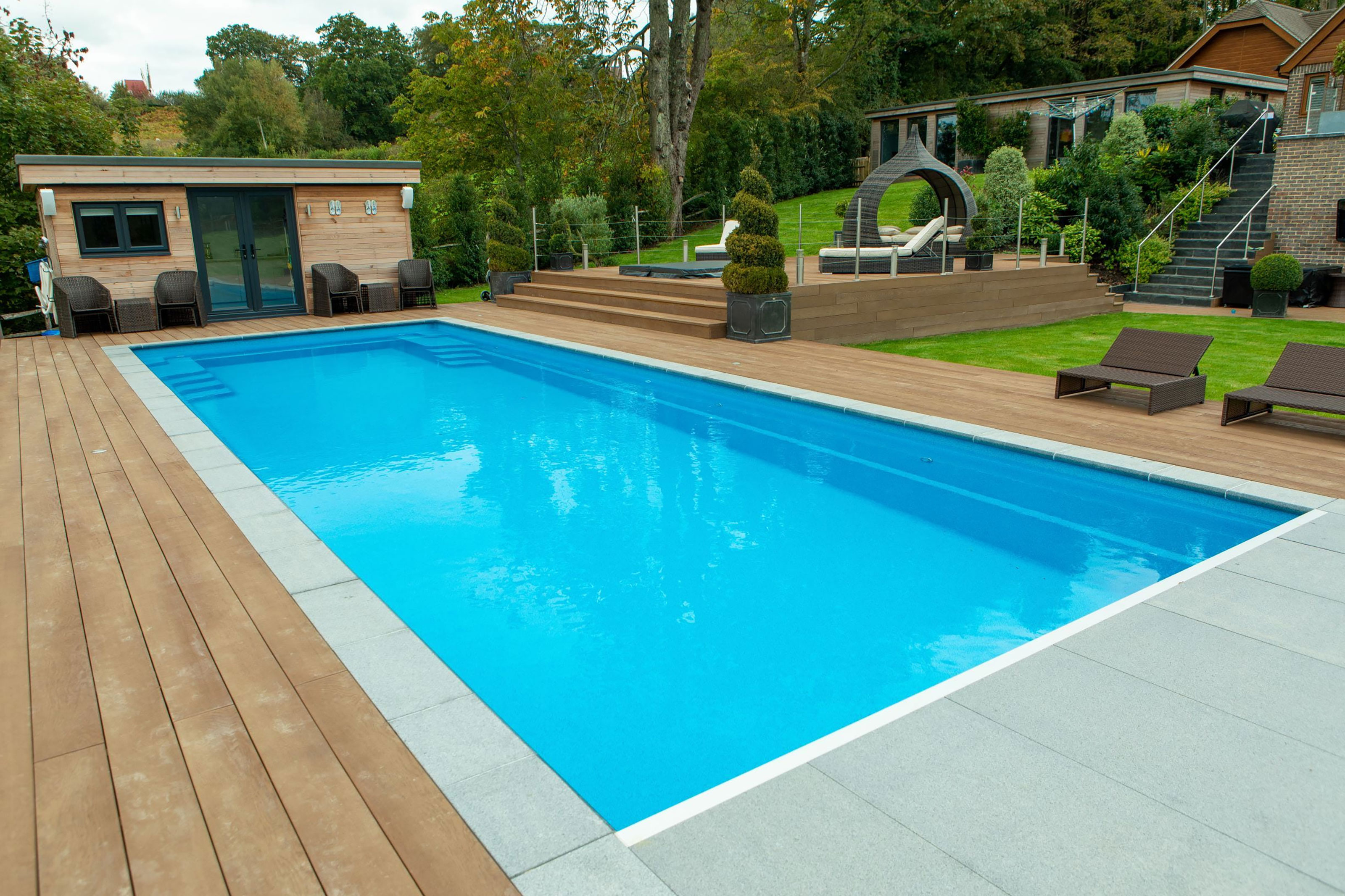
What happens when you put too much chlorine in a pool?
Whether your pool is part of your family garden ideas or just for you, it's important to keep the chlorine levels in check. Too much chlorine in a pool can have detrimental effects to both you and the pool itself. Firstly, it can irritate your eyes, skin, and even your lungs if you swim in an over-chlorinated pool. Secondly, it will make the water acidic, which is corrosive to the pool structure.
The best way to tell if your pool has too much chlorine in is to perform a simple test using a chlorine test strip. If it's too high, stop using the pool, and add in some neutralizing chemicals made specifically to address the problem, following the instructions carefully. You may need to balance out the pH levels, too.

The garden was always a big part of Holly's life growing up, as was the surrounding New Forest where she lived. Her appreciation for the great outdoors has only grown since then. She's been an allotment keeper, a professional gardener, and a botanical illustrator – plants are her passion.
